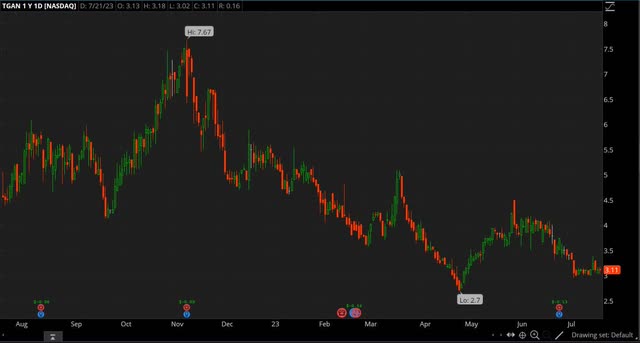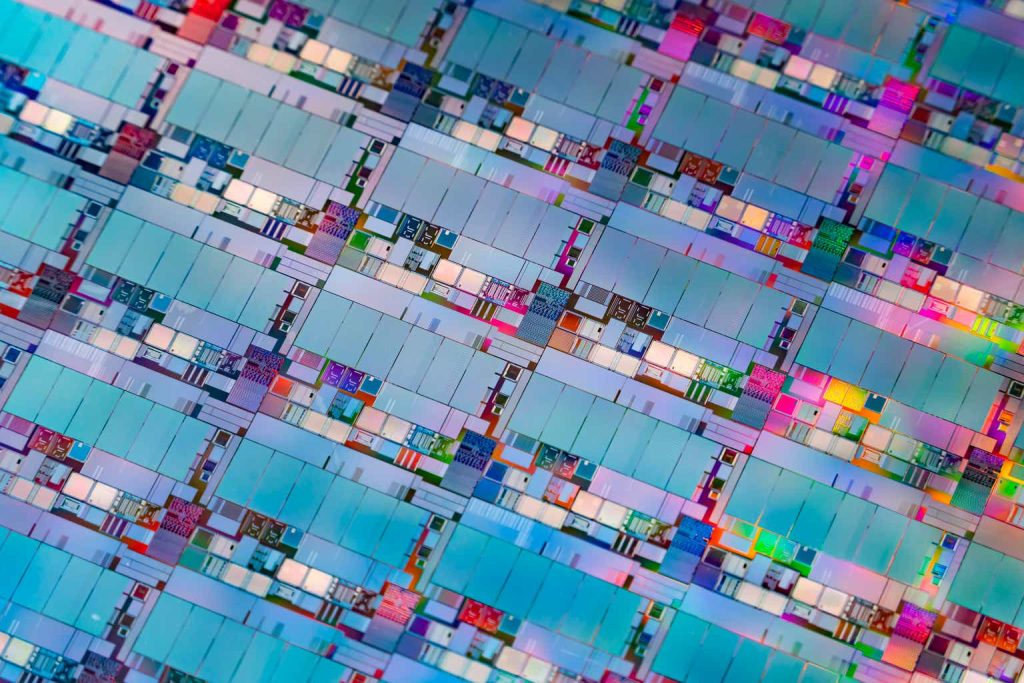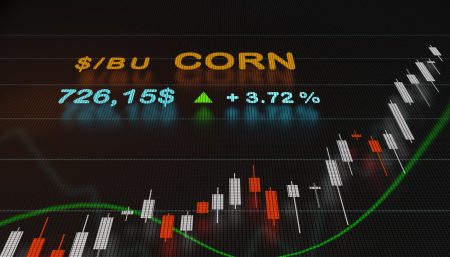Transphorm (NASDAQ:TGAN), a designer and manufacturer of semiconductor chips utilizing gallium nitride or GaN, has faced a couple of less than welcome developments lately. The government of China has imposed export controls on gallium, which is needed for GaN. This came a few days after TGAN closed the books on FY2023 by missing estimates for the top and the bottom line. TGAN was quick to soothe concerns about export controls, but the stock is trading lower nonetheless. However, the stock seems to have stabilized, which may suggest to some the coast is clear. Still, TGAN may not yet be in the clear. Why will be covered next.
The coast is clear or is it?
The chart below shows how TGAN has lost 43% YTD in what has been a good year thus far for stocks, semis in particular. However, the stock has flatlined in recent weeks after a decline that was in part driven by a mixed end to FY2023 and the emergence of export controls on gallium. Note how the stock has been hovering above $3 or so since July 6. The stock seems to be having issues staying below $3 for anything beyond a short while.

Source: Thinkorswim app
Recall how the stock fell below $3 in April for a few days, before it rebounded on the way higher. Going back further in time reveals how the stock hit bottom once it got below $3 in late 2020, before it went on to rally. Some might interpret this as the stock being close to the bottom, if it isn’t there already, now that the stock is close to $3 where previous turnarounds have happened. The stock may also be building a base with the recent price action, a bullish signal. This could provide the foundation for a rally to get back some of what the stock has lost in recent months.
Why export controls could still be an issue for TGAN
However, notice how the stock dipped after July 3, which is when China announced export controls on gallium. This means permission from the government of China is needed in order to export gallium. TGAN reacted quickly by issuing a statement, which contained the following:
“Transphorm manufactures high voltage GaN power semiconductors. Trimethylgallium (TMGa) is used to produce the GaN. The company confirmed that its primary TMGa suppliers are not based in China and that suppliers have confirmed to be well-positioned to meet forecasted demand. Transphorm is therefore securely positioned to continue manufacturing and supplying its GaN devices without interruption.
Transphorm also explained gallium is generally a byproduct resulting from refinement processes used to produce popular metals such as aluminum from bauxite ore. Aluminum is produced in numerous countries such as Australia, Brazil, India, Jamaica, and the United States among others.
Transphorm will continue to the monitor the situation as necessary but sees no direct impact on its current operations. Nor does the company see long-term sourcing issues.”
At first, this statement seems to have settled the issue. However, upon second thought and some additional research, it may not have, at least not yet. The statement does raise a couple of valid arguments. For instance, gallium is mostly produced as a byproduct from the refining of bauxite into aluminum and it is true both can be sourced from a number of countries. On paper, gallium can be sourced from sources other than China.
However, this does not necessarily mean the supply of gallium is not vulnerable to disruptions, which could make its way back to TGAN. While TGAN may not directly source any raw gallium from China, its suppliers almost certainly are, as are pretty much everyone. Keep in mind that of the 550,000 kilograms of gallium produced globally in 2022 according to the USGS, just 10,000 kilograms or less than 2% was not from China. This suggests that if China were to reduce the export of gallium by a large percentage, the market for gallium would fall into a large deficit. In theory, this could trigger a scramble for what remains, which could lead to a bidding war.
Furthermore, China is home to 86% of gallium production capacity, largely as a result of producing roughly 60% of the worldwide supply of alumina and aluminum. In contrast, most of the other aluminum producers do not have the necessary infrastructure to extract gallium during the bauxite refining process.
There are a few production facilities who used to produce gallium in the past, but even if were brought online in short order, they cannot match the output from China since they lack the necessary scale to fill in for China. Keep in mind that the reason why gallium supply has greatly increased in the last two decades is because of China. Production and hence supply of gallium before China entered the scene was a fraction of what it is now.
If the rest of the world wanted to close the gap with China, most existing producers would have to build new facilities, which would probably take at least 18-24 months in the best case, if not longer. If or when they are build, the supply of gallium from outside of China can increase. But before that happens, not much additional gallium supply is to be expected to substitute for whatever China has restricted from entering the market.
So it all depends on whether China reduces the supply of gallium and if so by how much. If most or all of what China supplies is blocked, then it is hard to see how there won’t be any disruptions to existing supply chains since there is not much wiggle room to drastically increase gallium production in the short term to mitigate a global shortage.
In other words, TGAN could be impacted, depending on how China proceeds with its export controls. It’s probably no coincidence TGAN used the world “long-term”, because while alternative sources of gallium can be built, doing so takes time. It is not something that can be done in the short term, hence the use of “long-term”.
In addition, it’s worth mentioning that TGAN is a supplier to the U.S. Department of Defense, which may be an issue now that export controls on gallium are here. China has justified the export controls by pointing to the military use of gallium and the fact that TGAN is a defense contractor could make it more likely to be subjected to export restrictions.
Why a global gallium shortage would come at a bad time for TGAN
If there’s a global shortage of gallium, then it would come at a bad time for TGAN. TGAN ended FY2023 on a soft note and if it were to add the additional headwind of supply chain disruptions that could affect the bottom line, then it is not hard to see how this could cause investors to flee, more than they have in recent past. TGAN may have a solid pipeline opportunity at over $440M, but if you cannot fulfill orders due to a lack of supplies, then it is all for naught.
Keep in mind TGAN missed Q4 FY2023 estimates for the top and the bottom line with revenue of $3.19M and a non-GAAP loss of $0.13 per share respectively, even if a delay with a U.S. government contract was to blame. In comparison, TGAN posted a loss of $0.07 on revenue of $4.83M in Q4 FY2022.
For the year, revenue declined from $24.05M in FY2022 to $16.51M in FY2023. Note that FY2022 revenue was boosted by a one-time contribution from a licensing transaction. Non-GAAP loss increased from $6.44M or $0.14 per share in FY2022 to $24.61M or $0.44 per share in FY2023. In terms of GAAP, losses were bigger.
There was a big increase in the number of shares outstanding. The non-GAAP weighted-average of shares outstanding rose from 46,056K in FY2022 to 56,227K in FY2023. In other words, shares are being diluted because TGAN is issuing new shares to raise capital. Remember that TGAN has recently announced its intention to raise $15M for working capital and other purposes.
Furthermore, there is not much leeway in the balance sheet if TGAN were to suffer bigger-than-expected losses due to supply chain disruptions. TGAN has about $15.5M in cash and cash equivalents, less than half the amount of a year ago. TGAN cannot sustain losses for too long without infusions of new capital. Finally, TGAN is valued at around 9 times book value with the stock priced at $3.11 as of July 21 to give it a market cap of $185M, which most would consider to be on the high side.
Why TGAN is worth keeping an eye on
However, if the issue of export controls were to be resolved through whatever means, then TGAN looks a lot better. TGAN does have a number of things going for it. For starters, Q1 FY2024 is expected to be better than Q4 FY2023. TGAN has begun executing the government contract that was delayed and, as a consequence, Q1 FY2024 guidance calls for revenue of $5.8-6.2M, a QoQ increase of $2.8M at the midpoint, and a non-GAAP loss of $0.10-0.13, which is better than the loss of $0.15 in the preceding Q4 FY2023.
In addition, TGAN appears to have an edge technology-wise. This is expected to power an increase in growth in H2 FY2024. From the Q4 FY2023 earnings call:
“We have repeatedly seen that our SuperGaN FET delivers higher performance over the typical TSMC style emod GaN. Recently in fact showing over 10% lower loss and running well over 30% cooler in a 280 watt charger. Also as reported in Power Electronics News and validating the physics based benefit of our GaN versus emod GaN. Given this design-in momentum and continued superior performance, we see the beginning of an increased ramp in the second half of the fiscal year.”
A transcript of the Q4 FY2023 earnings call can be found here.
TGAN is also upbeat about the future with strong growth expected in the coming years.
“The company anticipates rapid top line growth and GaN adoption across multiple end markets with a five year expected CAGR in excess of 50%. We are confident that the company can achieve an overall gross margin of over 40%.”
The issue of export controls could potentially play spoiler, depending on what China does, but other than that, TGAN has a promising future.
Investor takeaways
TGAN is essentially a start-up. As such, TGAN suffers from many of the ills that are associated with start-ups. TGAN is in the red and expected to remain so for the foreseeable future. Running at a loss forces TGAN to raise capital from time to time to replenish working capital, leading to share dilution. These symptoms are very common among companies trying to get off the ground.
On the other hand, the market for semiconductors utilizing GaN has great potential for growth. The number of use cases for GaN is expected to greatly increase in the coming years and TGAN could ride this wave of growth higher. TGAN still owns over a thousand patents for GaN IP. Its technology seems to have several advantages compared to existing offerings.
However, while TGAN is convinced the issue of export controls by China will not be a problem, there is reason to believe a drastic reduction in the worldwide supply of gallium could come back to affect TGAN. Notice that while the July 6 statement from TGAN helped stem the slide in the stock, it did not help recover the losses either in the wake of the export controls, which suggests the market has taken a wait-and-see approach as to what impact there will be from export controls.
I am neutral on TGAN with all the current uncertainty regarding export controls, or more specifically whether China will reduce the supply of gallium and by how much. Alternative sources of gallium can be build, but that takes time, depending on how much gallium is removed from the market and thus the amount that needs to be substituted.
As long as the supply of gallium is not reduced to a great extent, TGAN should be okay. But if there is a global shortage of gallium, then TGAN may be in trouble, especially with the current state of its income statement and balance sheet. TGAN cannot afford major disruptions to the supply chain in its current state. Investors may therefore want to keep an eye out on export controls despite the July 6 statement from TGAN. The risk is still out there.
Read the full article here















